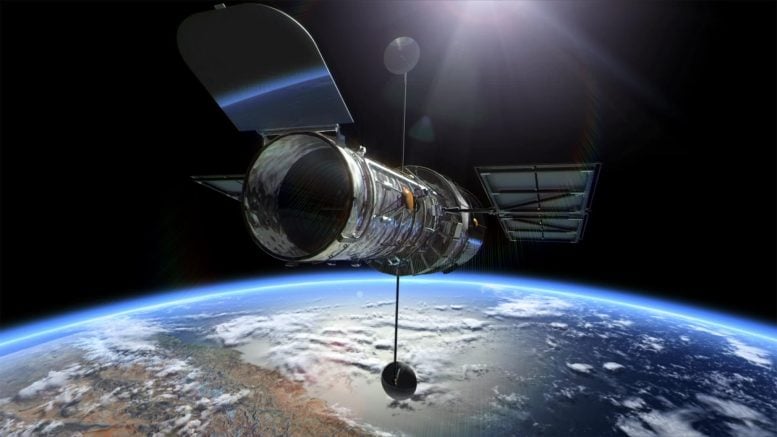The Physics of Failure: Analyzing Hubble’s Gyroscope Malfunction


Illustration of the Hubble Space Telescope over the Earth. Credit: ESA/Hubble (M. Kornmesser & L. L. Christensen)
The Hubble Space Telescope is currently in safe mode due to gyroscope problems, suspending its science activities. However, NASA remains optimistic about its future contributions to space exploration, working in tandem with other telescopes.
On May 24, NASA’s Hubble Space Telescope entered safe mode due to an ongoing gyroscope (gyro) issue, suspending science operations. Hubble’s instruments remain stable, and the telescope is in good health.
The telescope automatically entered safe mode when one of its three gyroscopes returned faulty telemetry readings. Hubble’s gyros measure the telescope’s slew rates and are part of the system that determines and controls precisely the direction the telescope is pointed.
NASA anticipates Hubble will continue making discoveries throughout this decade and possibly into the next, working with other observatories, such as the agency’s James Webb Space Telescope for the benefit of humanity.

An STS-125 crew member aboard the Space Shuttle Atlantis captured this still image of the Hubble Space Telescope as the two spacecraft continued their relative separation on May 19, 2009, after having been linked together for the better part of a week. During the week, five spacewalks were performed to complete the final servicing mission for the orbital observatory. Credit: NASA
The Hubble Space Telescope (HST) is a large space-based observatory launched in 1990 by NASA and the European Space Agency that recently celebrated its 34th anniversary. Orbiting outside the distortion of Earth’s atmosphere, it provides high-resolution images of celestial objects. This has led to numerous scientific breakthroughs, such as accurately determining the rate of expansion of the universe, observing the most distant galaxies, and studying the atmospheres of exoplanets. Hubble’s unique capabilities have made it one of the most important instruments in the history of astronomy.


